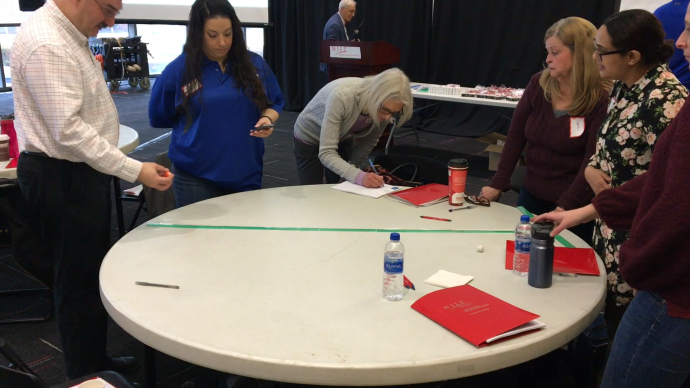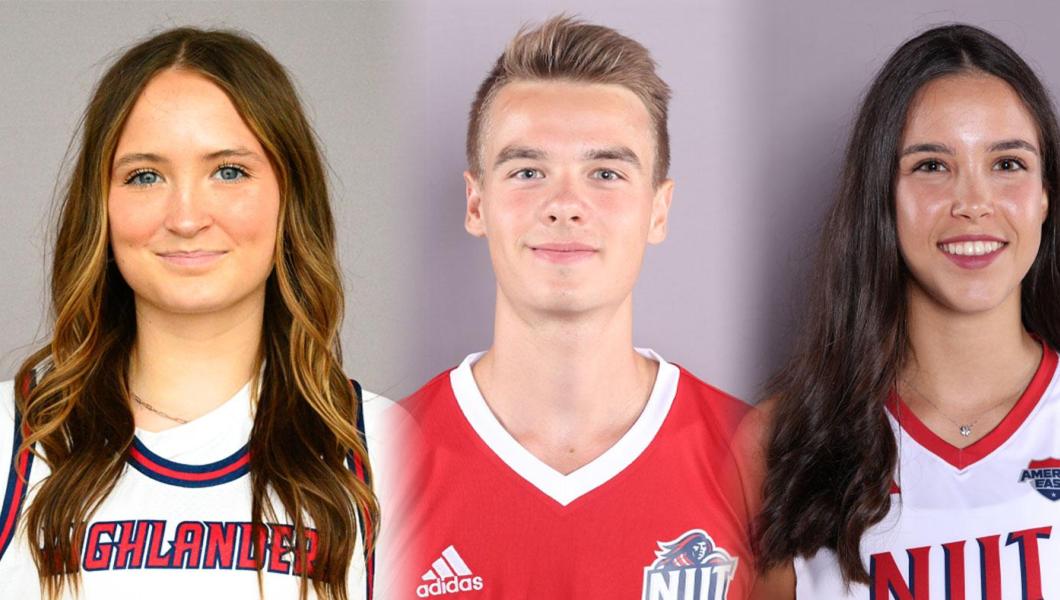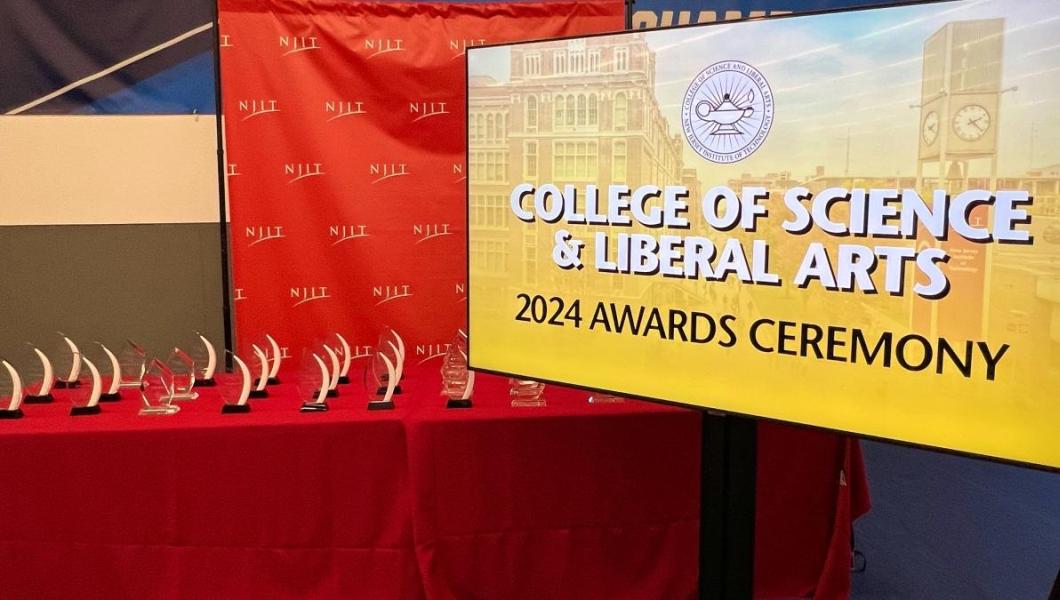Metro-Area Teachers Discover New Ways of 'Launching Students Into Physics'

Physics teachers and STEM educators throughout the metropolitan area gathered at NJIT’s Campus Center Atrium this month as Gordon Thomas, professor of physics and NJIT “Excellence in Teaching” awardee, presented “Launching Students Into Physics” — a workshop aimed at helping pre-college teachers and communicators better engage students in all-things physics.
The event provided an opportunity for community educators to participate in fun, inexpensive and interactive teaching techniques and lab experiments that they can use to prepare today’s students for physics at the college level, and which are “aligned to NJ Student Learning Standards in Science and Mathematics.”
“When I think of physics, I think of finding ways to have fun,” Thomas said in his introduction to over 60 attendees at the start of the event. “I think of finding ways to make people relax so they can be not terrified of the physics and math!”
Thomas kicked off the activities by breaking his audience into two groups of three per table, challenging them to work both independently and collectively to gather accurate measurements from speed tests of rubber balls thrown in the air and rolled across table surfaces. Thomas and students from NJIT’s physics department assisted the groups throughout, offering suggestions and encouragement to the teams as they went about their experiments and solving physics puzzles.

“The basic idea here is active learning,” said Thomas. “We’ve had some success with new teaching techniques within the physics department at NJIT, and I thought that sharing with the high school teachers might be helpful for them so that they can prepare the students for what we are doing at NJIT, as well as get fresh ideas for their classrooms.”
Among the participants attending the workshop were Steve Vega, high school chemistry and physics teacher at Kearny High School, and Lee-Ann Baxmeyer, who teaches physics and life sciences to seventh-grade students at Weehawken High School. Both attended the workshop to find better ways of connecting the world of physics with their current generation of students, who they now see relying increasingly on technology and benefiting more from hands-on learning activities.
“The kids have changed and my school has changed too since I started…we are a 1-to-1 district with Chromebooks now,” said Baxmeyer. “They don’t want a lot of lecturing anymore. They want student-centered activities, so the more hands-on ideas like these I can find, the better it is for my students.”
Vega, who transitioned into science education as an alternate route teacher after graduating with a chemistry B.S. from NJIT in 2007, said the activities at the event could offer a positive way to address some students’ misunderstandings of the STEM sciences influenced by social media.
“I’ve had students ask me how I can prove the Earth isn’t flat, so finding a way of getting my students to really understand how science works and getting them a basis of physics is very important because of how fundamental and concrete it is,” said Vega. “If I lift this table with a ball on it and it begins to roll, it is a very visual thing that we can calculate and measure together. That counteracts some of the ignorance that can come from social media.”
Vega, Baxmeyer and the other attendees spent the final part of the day learning how to teach the physics of circular motion to students using fidget spinners. “Now for the experiments that I think are the most fun!” announced Thomas as he passed out the spinners.
Thomas’s last challenge involved the groups learning how to measure the deceleration speed of their spinners and applying their new knowledge of “fidget spinner physics” in a contest — the group with the fidget spinner that could rotate the longest wins. Vega’s table took the honors.
“One of the great things about physics is that you don’t need much in the way of supplies and fancy equipment for good experiments,” said Vega. “After seeing the teaching examples using the fidget spinner, now I know what I am putting on my circular physics test next week. We are actually doing high school level physics experiments here and I am thrilled.”
The “Launching Students Into Physics” workshop was the first of its kind sponsored by NJIT’s Center for Pre-College Programs, Department of Physics and College of Science and Liberal Arts.
“Overall, our team in the physics department sees this as a great opportunity to promote physics at NJIT,” said Thomas.

